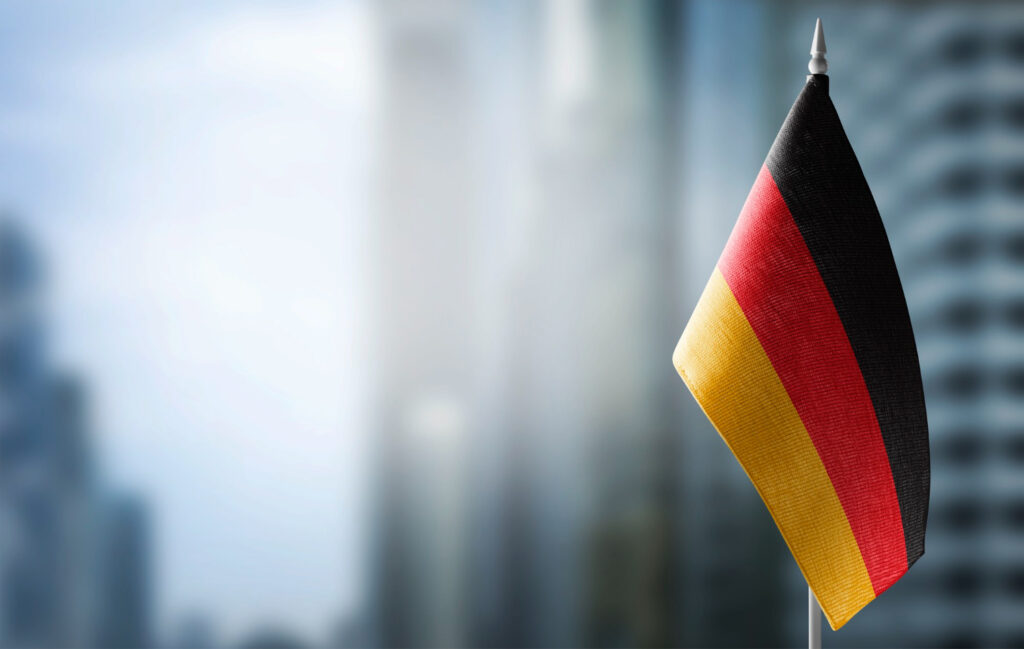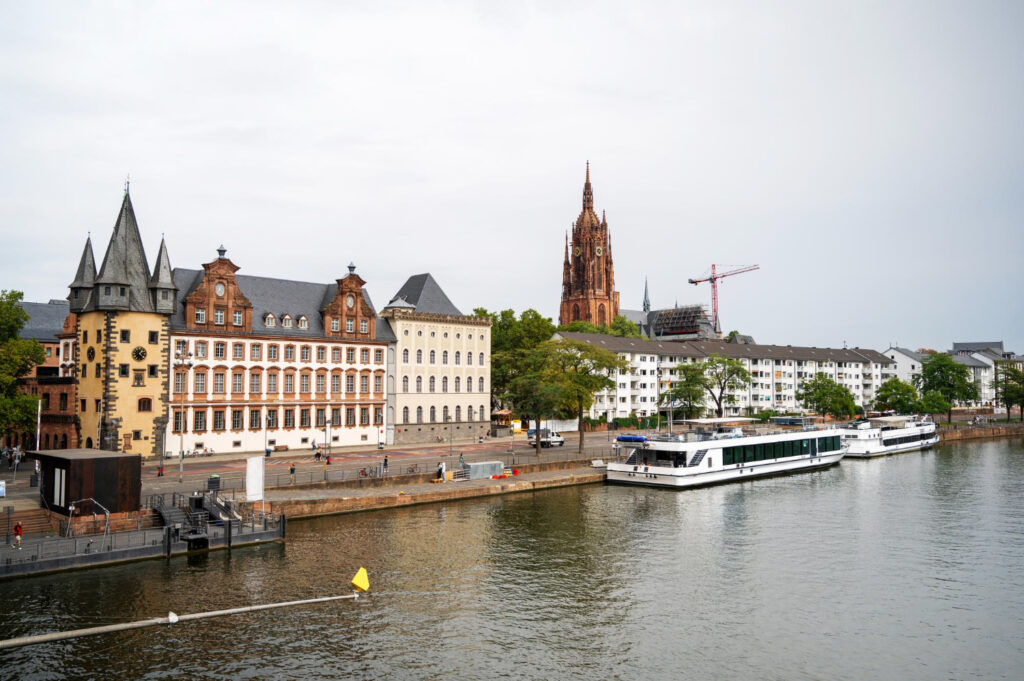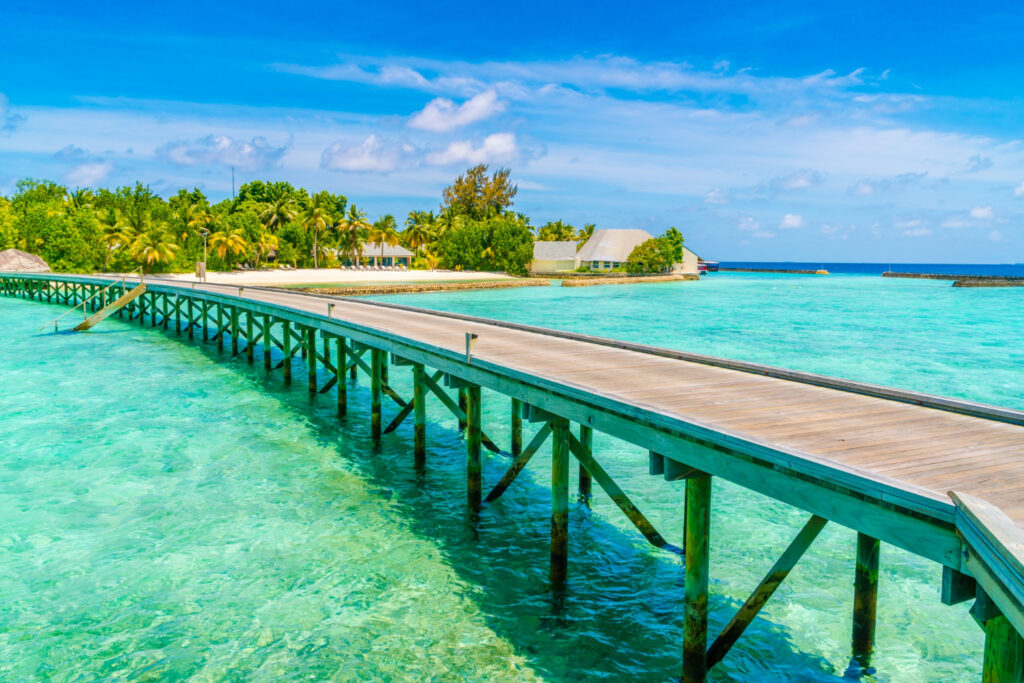Germany is a country rich in history, culture, and natural beauty. From bustling cities to quaint villages, Germany offers a diverse array of experiences for every traveler. Let’s dive into the top 20 places to visit in Germany, each with its unique charm and attractions.
1. Berlin – The Vibrant Capital
Brandenburg Gate and Reichstag Building
Berlin, Germany’s capital, is a city of contrasts where history meets modernity. Start your exploration at the iconic Brandenburg Gate, a symbol of Germany’s reunification. This neoclassical monument is a must-see for anyone visiting Berlin.
Next, head to the Reichstag Building, home to the German parliament. The glass dome offers panoramic views of the city and is a testament to Berlin’s blend of historical and contemporary architecture.
Museum Island
Museum Island, located in the heart of Berlin, is a UNESCO World Heritage site and a cultural treasure trove. It houses five world-renowned museums, including the Pergamon Museum and the Neues Museum. Art and history enthusiasts will find themselves immersed in Germany’s rich heritage.

2. Munich – The Bavarian Beauty
Marienplatz and Nymphenburg Palace
Munich, the capital of Bavaria, is famous for its lively culture and stunning architecture. Marienplatz, the city’s central square, is home to the impressive Neues Rathaus (New Town Hall) and the charming Glockenspiel show. It’s a great place to start your Munich adventure.
Another must-visit in Munich is the Nymphenburg Palace. This grand baroque palace, with its expansive gardens and opulent interiors, offers a glimpse into the Bavarian royal family’s history.
English Garden
The English Garden in Munich is one of the largest urban parks in the world. It’s a perfect spot for a leisurely stroll, a boat ride on the lake, or a visit to one of its traditional beer gardens. The park’s Japanese Tea House and Monopteros temple add to its charm.
3. Hamburg – The Maritime Marvel
Port of Hamburg and Miniatur Wunderland
Hamburg, Germany’s second-largest city, is a maritime hub with a vibrant atmosphere. The Port of Hamburg, also known as the “Gateway to the World,” is a bustling area filled with historic ships, modern architecture, and lively restaurants. A harbor tour offers a unique perspective of the city’s waterfront.
Miniatur Wunderland, the world’s largest model railway exhibition, is a must-see attraction in Hamburg. It features detailed miniature replicas of cities, landscapes, and even an airport, captivating visitors of all ages.
Elbphilharmonie
The Elbphilharmonie, a stunning concert hall located in Hamburg’s HafenCity district, is an architectural marvel. Its glass facade and wave-like structure make it a city icon. Attend a concert here for an unforgettable experience, or simply enjoy the panoramic views from the observation deck.
4. Frankfurt – The Financial Hub
Römer and Palmengarten
Frankfurt, known for its impressive skyline and financial district, also boasts historical and cultural attractions. The Römer, a medieval building complex in the city’s old town, serves as Frankfurt’s city hall and is a must-visit for history enthusiasts.
Palmengarten, one of Germany’s largest botanical gardens, offers a serene escape from the city’s hustle and bustle. Explore its diverse plant collections, themed gardens, and beautiful greenhouses.
Main Tower
For a breathtaking view of Frankfurt’s skyline, head to the Main Tower. The observation deck on the 56th floor offers panoramic vistas of the city and the surrounding region. It’s an ideal spot for photography and taking in the city’s modern architecture.
5. Cologne – The Cathedral City
Cologne Cathedral and Hohenzollern Bridge
Cologne is famous for its magnificent Gothic cathedral, the Kölner Dom. This UNESCO World Heritage site is one of the most impressive places to visit in Germany. Climb the tower for a stunning view of the city and the Rhine River.
The Hohenzollern Bridge, located near the cathedral, is known for its thousands of love locks attached to its railings. Walk across the bridge for picturesque views of the Rhine and the city’s skyline.
Old Town and Chocolate Museum
Cologne’s Old Town is a charming area with narrow streets, colorful houses, and lively squares. It’s a great place to explore on foot, with plenty of cafes, shops, and historic sites to discover.
The Chocolate Museum, located on the Rhine River, is a sweet treat for visitors. Learn about the history of chocolate, see how it’s made, and indulge in delicious samples.
6. Heidelberg – The Romantic City
Heidelberg Castle and Old Bridge
Heidelberg is renowned for its romantic ambiance and historic charm. The Heidelberg Castle, perched on a hill overlooking the city, is a must-visit. Explore the castle’s ruins, gardens, and the famous Heidelberg Tun, the world’s largest wine barrel.
The Old Bridge, officially known as the Karl Theodor Bridge, offers stunning views of the castle and the Neckar River. It’s a perfect spot for a leisurely stroll and capturing beautiful photos.
Philosopher’s Walk
The Philosopher’s Walk, a scenic path along the northern side of the Neckar River, provides breathtaking views of Heidelberg’s old town and castle. The walk is named after the university professors and philosophers who once strolled along this path, seeking inspiration from the serene surroundings.
7. Dresden – The Florence of the Elbe
Zwinger Palace and Frauenkirche
Dresden, often called the “Florence of the Elbe,” is known for its stunning baroque architecture. The Zwinger Palace, a magnificent complex with gardens, museums, and galleries, is one of the top places to visit in Germany. Don’t miss the Old Masters Picture Gallery, which houses works by Raphael, Rembrandt, and Vermeer.
The Frauenkirche, a baroque church that was destroyed during World War II and meticulously rebuilt, is another must-see. Its impressive dome and beautifully restored interior are a testament to Dresden’s resilience and rich history.
Semperoper and Brühl’s Terrace
The Semperoper, Dresden’s famous opera house, is an architectural masterpiece and a cultural landmark. Attend a performance or take a guided tour to appreciate its grandeur and history.
Brühl’s Terrace, known as the “Balcony of Europe,” offers panoramic views of the Elbe River and the city’s skyline. It’s a lovely place for a walk, with beautiful gardens and historic buildings lining the terrace.
8. Nuremberg – The Medieval Marvel
Nuremberg Castle and Albrecht Dürer’s House
Nuremberg, with its well-preserved medieval architecture, is a city rich in history. Nuremberg Castle, a historic fortress overlooking the old town, offers fascinating insights into the city’s past. Explore the castle’s towers, courtyards, and the Deep Well for a glimpse into medieval life.
Albrecht Dürer’s House, the former home of the renowned German painter and printmaker, is now a museum dedicated to his life and work. The house provides a unique opportunity to learn about Dürer’s artistic achievements and the history of Nuremberg.
Nazi Party Rally Grounds and Documentation Center
Nuremberg is also known for its significant role in World War II history. The Nazi Party Rally Grounds and the Documentation Center provide a sobering look into this dark chapter of history. The exhibits and information here offer valuable insights into the events of the era and the importance of remembrance.
9. Stuttgart – The Automobile City
Mercedes-Benz Museum and Porsche Museum
Stuttgart is a must-visit destination for car enthusiasts. The Mercedes-Benz Museum showcases the history and innovation of one of the world’s most iconic automobile brands. With its extensive collection of vehicles and interactive exhibits, the museum is a fascinating journey through automotive history.
The Porsche Museum, another highlight in Stuttgart, offers an impressive collection of Porsche cars, from vintage models to modern supercars. The museum’s sleek design and engaging exhibits make it a top attraction for car lovers.
Stuttgart TV Tower and Wilhelma Zoo
For panoramic views of Stuttgart and the surrounding region, visit the Stuttgart TV Tower. As the world’s first television tower built from reinforced concrete, it offers a unique perspective of the city from its observation deck.
Wilhelma Zoo and Botanical Garden is a beautiful attraction that combines a zoological garden with botanical exhibits. The zoo is home to a diverse range of animals and plant species, making it a great destination for families and nature enthusiasts.
10. Leipzig – The City of Music
St. Thomas Church and Bach Museum
Leipzig, known for its rich musical heritage, is a city that celebrates its artistic history. St. Thomas Church is one of the most important sites in Leipzig, as it was here that Johann Sebastian Bach served as a cantor. The church is also the final resting place of the great composer.
The Bach Museum, located nearby, offers an in-depth look at Bach’s life and work. The museum’s interactive exhibits and collections provide a fascinating insight into the composer’s musical genius and legacy.
Leipzig Zoo and Panorama Tower
Leipzig Zoo is one of the oldest and most renowned zoos in Germany. With its diverse range of animals and innovative exhibits, the zoo offers an enjoyable and educational experience for visitors of all ages. Highlights include the Gondwanaland tropical hall and the Pongoland ape sanctuary.
The Panorama Tower, also known as the City-Hochhaus, offers stunning views of Leipzig from its observation deck. The tower’s central location makes it an excellent spot to get a bird’s-eye view of the city’s landmarks and green spaces.
11. Freiburg – The Gateway to the Black Forest
Freiburg Minster and Old Town
Freiburg, located at the edge of the Black Forest, is a picturesque city with a charming old town. The Freiburg Minster, a Gothic cathedral with a striking spire, is a must-visit landmark. Climb to the top for panoramic views of the city and the surrounding countryside.
The old town of Freiburg is a delightful area to explore, with its cobblestone streets, colorful buildings, and lively markets. The Bachle, small water-filled channels that run through the streets, add to the city’s unique charm.
Schauinsland and Black Forest Trails
For nature enthusiasts, a visit to Schauinsland, a nearby mountain, is a must. Take the cable car to the summit for breathtaking views of the Black Forest and the Rhine Valley. The area offers excellent hiking and cycling opportunities, with trails suitable for all levels.
The Black Forest itself is a natural paradise, with its dense forests, picturesque villages, and scenic trails. Whether you’re hiking, cycling, or simply enjoying the tranquility, the Black Forest is a perfect escape from the hustle and bustle of city life.
12. Bremen – The Fairy Tale City
Bremen Town Musicians and Bremen Roland
Bremen, a historic city in northern Germany, is known for its fairy tale connections and charming atmosphere. The Bremen Town Musicians, a famous statue inspired by the Brothers Grimm fairy tale, is a must-see landmark in the city. It’s a popular spot for photos and a symbol of Bremen’s cultural heritage.
The Bremen Roland, a statue of a knight located in the Market Square, is another iconic sight. The statue represents freedom and justice and is part of the city’s UNESCO World Heritage site.
Schnoor Quarter and Universum Bremen
The Schnoor Quarter, Bremen’s oldest neighborhood, is a maze of narrow streets lined with colorful houses, artisan shops, and cozy cafes. It’s a delightful area to explore on foot, offering a glimpse into Bremen’s medieval past.
Universum Bremen, a science center with interactive exhibits and hands-on activities, is a great destination for families and curious minds. The futuristic building and engaging displays make it a fun and educational experience.
13. Hanover – The Royal City
Herrenhausen Gardens and Hanover Zoo
Hanover, known for its royal heritage and green spaces, offers a blend of history and nature. The Herrenhausen Gardens, a series of baroque and English-style gardens, are a highlight of the city. Explore the Great Garden, the Berggarten botanical garden, and the picturesque Herrenhausen Palace.
Hanover Zoo is another popular attraction, featuring themed areas and a wide range of animals. The zoo’s innovative exhibits and naturalistic habitats provide an enjoyable experience for visitors of all ages.
New Town Hall and Maschsee
The New Town Hall, an impressive neo-Renaissance building, is a must-visit landmark in Hanover. Take the unique curved elevator to the observation deck for panoramic views of the city and the surrounding area.
Maschsee, a large artificial lake in the heart of Hanover, offers opportunities for boating, swimming, and relaxing by the water. The lake’s scenic surroundings and recreational facilities make it a popular spot for locals and visitors alike.
14. Bonn – The Birthplace of Beethoven
Beethoven House and Bonn Minster
Bonn, the birthplace of Ludwig van Beethoven, is a city rich in musical history. The Beethoven House, a museum dedicated to the composer’s life and work, is a must-visit attraction. Explore the exhibits and artifacts that provide insight into Beethoven’s genius and legacy.
The Bonn Minster, one of Germany’s oldest churches, is another notable landmark. The Romanesque basilica, with its impressive architecture and serene atmosphere, is a testament to Bonn’s historical significance.
Rheinaue Park and Museum Mile
Rheinaue Park, a large park along the Rhine River, offers a peaceful retreat with beautiful gardens, lakes, and walking trails. It’s an ideal place for a leisurely stroll, a picnic, or outdoor activities.
Bonn’s Museum Mile is a cultural hub, featuring several important museums and galleries. The Bonn Museum of Modern Art, the German Museum of History, and the Alexander Koenig Zoological Museum are just a few of the highlights in this vibrant area.
15. Düsseldorf – The Fashion Capital
Königsallee and Rheinturm
Düsseldorf, known for its fashion and modern architecture, is a dynamic city with plenty to offer. Königsallee, often referred to as “Kö,” is a luxury shopping street lined with high-end boutiques, restaurants, and cafes. It’s a great place to indulge in some retail therapy and enjoy the stylish atmosphere.
The Rheinturm, a telecommunications tower with an observation deck, offers stunning views of Düsseldorf and the Rhine River. The tower’s rotating restaurant provides a unique dining experience with panoramic vistas.
MedienHafen and Altstadt
MedienHafen, Düsseldorf’s redeveloped harbor area, is known for its striking modern architecture and vibrant nightlife. Explore the unique buildings designed by renowned architects, and enjoy the trendy bars, restaurants, and clubs that line the waterfront.
Altstadt, Düsseldorf’s old town, is famous for its lively atmosphere and numerous breweries. Known as “the longest bar in the world,” Altstadt’s streets are filled with pubs and beer halls where you can sample local brews and traditional German cuisine.
16. Potsdam – The City of Palaces
Sanssouci Palace and Park
Potsdam, located just outside Berlin, is a city known for its stunning palaces and gardens. Sanssouci Palace, the former summer residence of Frederick the Great, is a baroque masterpiece surrounded by beautiful gardens. Explore the palace’s opulent rooms and stroll through the expansive park.
Cecilienhof Palace and Dutch Quarter
Cecilienhof Palace, the site of the Potsdam Conference at the end of World War II, is another must-visit attraction. The palace’s Tudor-style architecture and historical significance make it a fascinating destination.
The Dutch Quarter, a charming neighborhood in Potsdam, features picturesque brick houses, artisan shops, and cozy cafes. It’s a lovely area to explore, with a unique architectural style that sets it apart from the rest of the city.
17. Weimar – The Cultural Heart
Goethe House and Schiller House
Weimar, a city with a rich cultural and literary heritage, is known for its connections to Goethe and Schiller. The Goethe House, the former home of Johann Wolfgang von Goethe, is now a museum dedicated to the writer’s life and work. The beautifully preserved house provides a glimpse into Goethe’s creative world.
The Schiller House, the residence of Friedrich Schiller, is another important literary site. The museum offers insights into Schiller’s life and his contributions to German literature.
Bauhaus Museum and Park an der Ilm
The Bauhaus Museum in Weimar is a must-visit for art and design enthusiasts. The museum showcases the history and impact of the Bauhaus movement, with exhibits featuring works by prominent artists and designers.
Park an der Ilm, a large English-style park, offers a peaceful retreat with its scenic landscapes, historic monuments, and walking trails. The park’s serene atmosphere and natural beauty make it a perfect place for relaxation and contemplation.
18. Augsburg – The Renaissance Gem
Augsburg Cathedral and Fuggerei
Augsburg, one of Germany’s oldest cities, is known for its rich history and Renaissance architecture. Augsburg Cathedral, a stunning Gothic structure with impressive stained glass windows and a beautiful interior, is a must-visit landmark.
Fuggerei, the world’s oldest social housing complex, is another notable attraction in Augsburg. Founded by the Fugger family in the 16th century, the complex still provides affordable housing for residents. Explore the historic buildings and learn about the Fugger family’s legacy.
Augsburg Town Hall and Perlach Tower
Augsburg Town Hall, a magnificent Renaissance building, is one of the city’s most iconic landmarks. The Golden Hall, with its opulent decor and intricate ceiling paintings, is a highlight of the town hall.
Perlach Tower, located next to the town hall, offers panoramic views of Augsburg and the surrounding area. Climb the tower for a stunning perspective of the city’s historic center and its architectural treasures.
19. Lübeck – The Hanseatic Jewel
Holstentor and Lübeck Cathedral
Lübeck, a UNESCO World Heritage site, is a city with a rich maritime history and well-preserved medieval architecture. The Holstentor, a distinctive brick gate that once served as the city’s entrance, is an iconic symbol of Lübeck.
Lübeck Cathedral, a beautiful Gothic church with impressive twin towers, is another must-see landmark. The cathedral’s interior features stunning artworks, including the famous astronomical clock.
Buddenbrook House and Marzipan Museum
Buddenbrook House, the former home of the famous German writer Thomas Mann, is now a museum dedicated to his life and work. The museum offers fascinating insights into Mann’s literary achievements and the history of the Mann family.
Lübeck is also famous for its marzipan, and a visit to the Marzipan Museum is a sweet treat. Learn about the history and production of marzipan, and sample some delicious creations.
20. Regensburg – The Medieval Marvel
Regensburg Cathedral and Stone Bridge
Regensburg, a city with a well-preserved medieval old town, is a UNESCO World Heritage site. The Regensburg Cathedral, a magnificent Gothic church with stunning stained glass windows, is a must-visit landmark.
The Stone Bridge, a medieval bridge that spans the Danube River, offers picturesque views of the city and its historic buildings. It’s a great place for a leisurely stroll and capturing beautiful photos.
Thurn und Taxis Palace and Old Town Hall
Thurn und Taxis Palace, a grand baroque residence, is one of the largest and most impressive palaces in Germany. The palace’s opulent rooms and beautiful gardens are open to the public, offering a glimpse into the lives of the aristocracy.
The Old Town Hall, a historic building with a beautiful facade, is another notable attraction in Regensburg. The town hall’s medieval courtroom and council chamber provide insights into the city’s history and governance.





